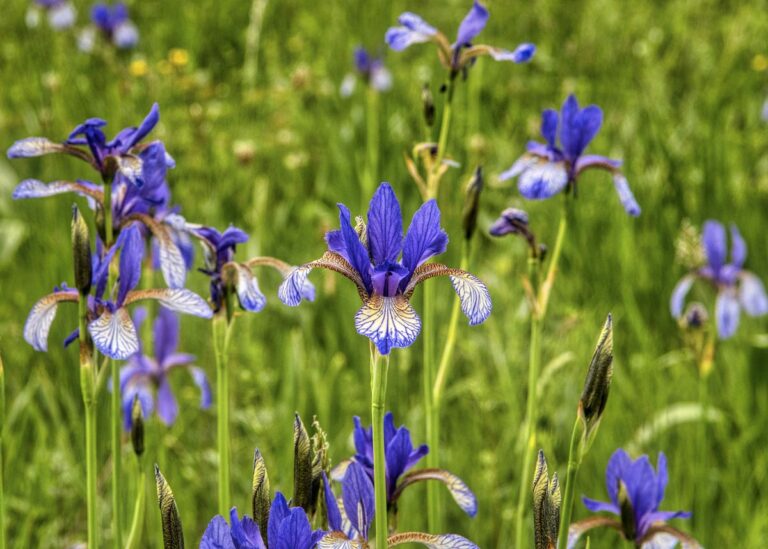The Siberian iris (Iris siberica) is a hardy, easy-to-grow perennial that is native to the cold marshlands of Russia and to Northern Asia. It is known for its tall, lush foliage and beautiful, showy flowers that bloom in shades of blue, violet, pink, and white. Siberian iris plants are popular among gardeners for their long-lasting blooms and ability to thrive in various growing conditions.
These perennials are low maintenance (just like Jelly Bean plants) and require little care, making them a popular choice for novice and experienced gardeners.
Most popular Siberian Iris varieties:
- Butter and Sugar
- Blueberry Fair
- Caesar’s Brother
- Cape Cod Boys
- Snow Queen
Care
If you live in a sunny location, the Siberian Iris is not very hard to grow and care for. Here are the top things you need to pay attention:
- Soil: To ensure the best growth and blooms, you need to plant your Siberian iris in slightly acidic to neutral soil with a pH range of 6.5 to 7.0. Also, they do not like their soil dry, but never let them sit in water for long. A layer of mulch helps maintain soil moisture and prevents frost heaving in winter.
- Water: Siberian iris requires light, and regular watering. During spring and early summer, it should receive 1 inch of water per week, and later in the summer, every other week watering is enough.
- Temperature: Siberian iris is hardy in USDA zones 3 to 8 and can tolerate both dry and humid atmospheric conditions.
- Light: Siberian iris does well in full sun in cooler areas, but prefers partial shade in warmer climates, with adequate moisture. Too much shade may lead to reduced flowering, so pay attention to that.
Propagation
Siberian iris is propagated mostly by dividing the rhizomatous roots, which can be dense and fibrous. You should divide when the center of the crown becomes woody, either in fall in warmer regions or spring in northern climates.
- To divide, loosen the rhizomes, prune foliage to 6-8 inches,
- cut away divisions with 2 tufts of foliage
- plant each division 1-2 feet apart
- keep moist for 6-8 weeks.
Pruning
To maintain their health, carefully prune them by deadheading faded blossoms and cutting them where they connect to the stems. After the blooming season, trim all bloom stalks just above the crowns and remove the remaining foliage in autumn. Remember to provide well-draining soil and avoid high-nitrogen fertilizers. With these tips, your Siberian irises will flourish and charm your garden.
Common Pests
- spider mites
- Caterpillars
- snails and slugs
- aphids
- whiteflies
Frequently Asked Questions
Siberian iris plants have a pretty long lifespan but will eventually show a decline in performance if they are not divided every 3 to 5 years.
Is Siberian Iris toxic to cats?
Yes, the Siberian Iris plant is toxic to humans, cats, and dogs.
Is there a better type of iris for warmer climates?
Gardeners in warmer climates (USDA Zone 9) may have limited success with Siberian and bearded iris. Still, they can try growing fringed iris, Dalmation iris, white flag iris, or the hybrid ‘Pacific Coast’ Iris.
